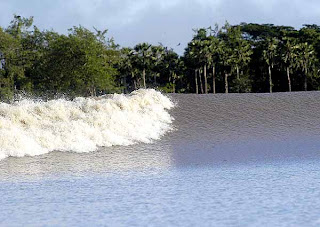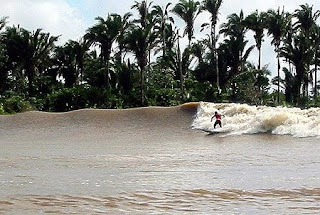Memory involves three stages: encoding, storage, and retrieval. Your brain encodes information when it perceives it and registers it. This information can then be stored for future retrieval. Memory failure occurs when any one of these three stages breaks down.

Memory itself has been divided into various kinds, including sensory memory, short-term memory, and long-term memory. Sensory memory receives information from stimuli through the senses, such as smell, sight, and touch. Short-term memory, also called working memory, holds small amounts of information for brief periods.
Thus, we can add up numbers in our head, remember a telephone number long enough to dial it, and remember the first half of a sentence while reading or listening to the second half. But as we all know, short-term memory has its limits.
If you want to store information indefinitely, it must go into your long-term memory. How can you put it there? The following principles will help.
▪ Interest Cultivate an interest in the subject, and remind yourself of the reasons for learning it. As your own experience in life may tell you, when your emotions are involved, you enhance your memory.
▪ Attention “Most ‘memory failures’ actually represent failures in attention,” says the book Mysteries of the Mind. What can help you to pay attention? Be interested and, where possible, take notes. Note-taking not only focuses the mind but also enables a listener to review the material later.
▪ Understanding When you do not understand a teaching or concept, likely you will not remember it well, if at all. Understanding illuminates the relationship between the parts, knitting them together to form a logical whole. For example, when a student of mechanics understands how an engine works, he will better remember details about the engine.
▪ Organization Categorize similar concepts or related ideas. For instance, a grocery list is easier to remember when we categorize items—meats, vegetables, fruits, and so on. Also, divide the information into manageable chunks of not more than five to seven items. Telephone numbers are usually divided into two parts so that they can be remembered more easily. Finally, it may help to put your list into a certain order, perhaps alphabetical.
▪ Recitation, or verbalization Repeating aloud what you want to remember (a foreign-language word or phrase, for example) will strengthen the neural connections. How so? First, saying the word forces you to pay close attention. Second, you may get immediate feedback from your teacher. And third, listening—even to yourself—calls into play other parts of your brain.
▪ Visualization Make a mental picture of what you wish to remember. You might also find it helpful to draw it or map it out. Like verbalization, visualization makes use of different parts of your brain. The more senses you use, the deeper the information is embedded.
▪ Association When learning something new, associate it with something you already know. Linking thoughts to memories already stored makes encoding and retrieving easier, the association serving as a cue. For example, to remember a person’s name, link it to some unusual feature of his appearance or to something else that will call the name to mind. The more humorous or absurd the association, the better the recall. In short, we need to think about the people and things we want to remember.
The book Searching for Memory states: “If we operate on automatic pilot much of the time and do not reflect on our environment and our experiences, we may pay a price by retaining only sketchy memories of where we have been and what we have done.”
▪ Consolidation Allow time for the information to be processed, to soak in, as it were. One of the best ways to do this is to review what you have learned, perhaps by repeating it to someone else. If you had an interesting experience or read something upbuilding in the Bible or in a Bible study aid, share it with someone. In that way both of you will benefit—your memory will be reinforced and your friend, encouraged. For good reason, repetition has been called the mother of retention.

Memory itself has been divided into various kinds, including sensory memory, short-term memory, and long-term memory. Sensory memory receives information from stimuli through the senses, such as smell, sight, and touch. Short-term memory, also called working memory, holds small amounts of information for brief periods.
Thus, we can add up numbers in our head, remember a telephone number long enough to dial it, and remember the first half of a sentence while reading or listening to the second half. But as we all know, short-term memory has its limits.
If you want to store information indefinitely, it must go into your long-term memory. How can you put it there? The following principles will help.
▪ Interest Cultivate an interest in the subject, and remind yourself of the reasons for learning it. As your own experience in life may tell you, when your emotions are involved, you enhance your memory.
▪ Attention “Most ‘memory failures’ actually represent failures in attention,” says the book Mysteries of the Mind. What can help you to pay attention? Be interested and, where possible, take notes. Note-taking not only focuses the mind but also enables a listener to review the material later.
▪ Understanding When you do not understand a teaching or concept, likely you will not remember it well, if at all. Understanding illuminates the relationship between the parts, knitting them together to form a logical whole. For example, when a student of mechanics understands how an engine works, he will better remember details about the engine.
▪ Organization Categorize similar concepts or related ideas. For instance, a grocery list is easier to remember when we categorize items—meats, vegetables, fruits, and so on. Also, divide the information into manageable chunks of not more than five to seven items. Telephone numbers are usually divided into two parts so that they can be remembered more easily. Finally, it may help to put your list into a certain order, perhaps alphabetical.
▪ Recitation, or verbalization Repeating aloud what you want to remember (a foreign-language word or phrase, for example) will strengthen the neural connections. How so? First, saying the word forces you to pay close attention. Second, you may get immediate feedback from your teacher. And third, listening—even to yourself—calls into play other parts of your brain.
▪ Visualization Make a mental picture of what you wish to remember. You might also find it helpful to draw it or map it out. Like verbalization, visualization makes use of different parts of your brain. The more senses you use, the deeper the information is embedded.
▪ Association When learning something new, associate it with something you already know. Linking thoughts to memories already stored makes encoding and retrieving easier, the association serving as a cue. For example, to remember a person’s name, link it to some unusual feature of his appearance or to something else that will call the name to mind. The more humorous or absurd the association, the better the recall. In short, we need to think about the people and things we want to remember.
The book Searching for Memory states: “If we operate on automatic pilot much of the time and do not reflect on our environment and our experiences, we may pay a price by retaining only sketchy memories of where we have been and what we have done.”
▪ Consolidation Allow time for the information to be processed, to soak in, as it were. One of the best ways to do this is to review what you have learned, perhaps by repeating it to someone else. If you had an interesting experience or read something upbuilding in the Bible or in a Bible study aid, share it with someone. In that way both of you will benefit—your memory will be reinforced and your friend, encouraged. For good reason, repetition has been called the mother of retention.







